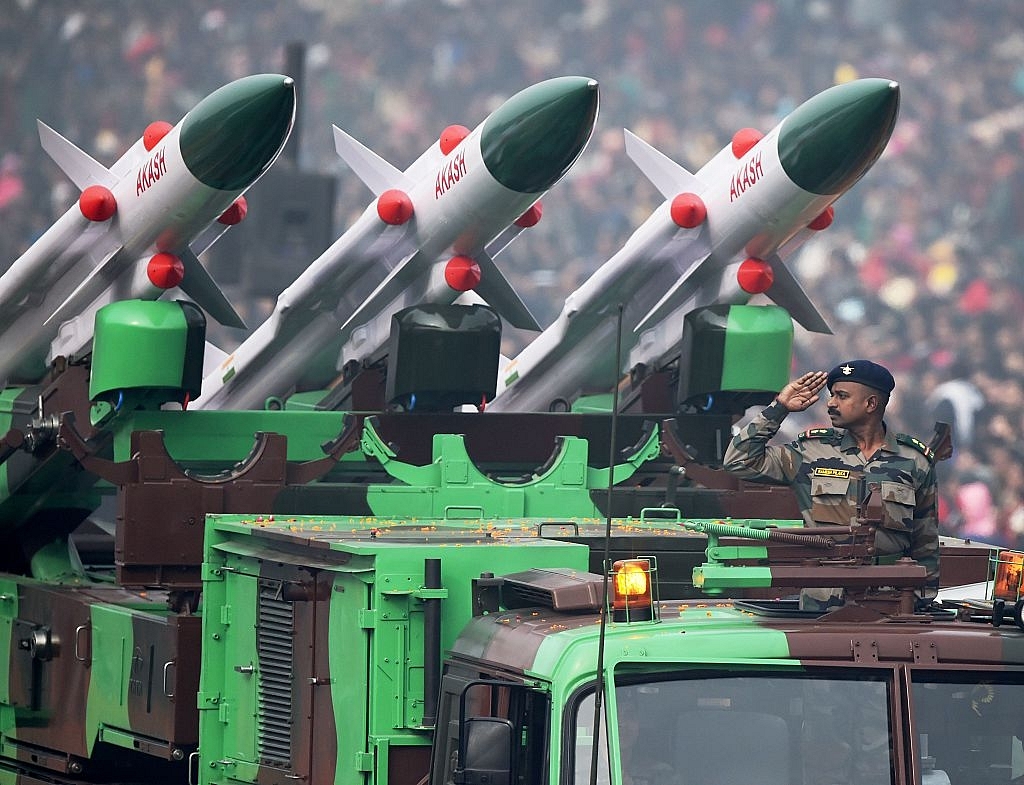Insta
Akash Missile Test: DRDO Can Now Make RF-Seekers Locally, An Important Component In Tactical Missiles

An Indian soldier salutes as he rides an Akash weapon system of air defence during India’s Republic Day parade in New Delhi. (ROBERTO SCHMIDT/AFP/Getty Images)
India on Tuesday successfully test-fired Akash its supersonic surface-to-air missile an with indigenous radio frequency seeker from a test range in Odisha. The supersonic missile is the first surface-to-air missile with indigenous seeker to be test fired and is being inducted into the Army as short range surface to air missile.
With the development of radio frequency seeker, the Defence Research and Development Organisation (DRDO) has reportedly been able to improve the missile’s accuracy and range, a report in The Diplomat said. Radio frequency seekers, required for all missiles that have a range less than 300-km (called tactical/battlefield missiles), help missiles track and strike targets with accuracy.
With the successful test firing, India has achieved the capability of making any type of surface to air missile, defence sources said.
Akash has a strike range of about 25 km and carries a 55- kg fragmentation warhead that is triggered by a proximity fuse. It is an all-weather area air defence weapon system for defending vulnerable areas against medium-range air targets penetrating from low, medium and high altitudes. Developed by DRDO, the Akash missile system has the capability to neutralise aerial targets like fighter jets, cruise missiles and air-to-surface missiles as well as ballistic missiles.
The system is designed to neutralise multiple aerial targets attacking from several directions simultaneously. The system is autonomous, and its operation is fully automated. There is flexibility in deployment, they said.
It uses state-of-the-art integral ramjet rocket propulsion system and the onboard digital autopilot ensures stability and control. Electro-pneumatic servo actuation system controls cruciform wings for agile response and thermal batteries provide onboard power supply. The radio proximity fuse has advanced signal processing features. Together with the pre-fragmented warhead and safety arming mechanism, a high kill probability of manoeuvring targets is assured. (PTI)
Support Swarajya's 50 Ground Reports Project & Sponsor A Story
Every general election Swarajya does a 50 ground reports project.
Aimed only at serious readers and those who appreciate the nuances of political undercurrents, the project provides a sense of India's electoral landscape. As you know, these reports are produced after considerable investment of travel, time and effort on the ground.
This time too we've kicked off the project in style and have covered over 30 constituencies already. If you're someone who appreciates such work and have enjoyed our coverage please consider sponsoring a ground report for just Rs 2999 to Rs 19,999 - it goes a long way in helping us produce more quality reportage.
You can also back this project by becoming a subscriber for as little as Rs 999 - so do click on this links and choose a plan that suits you and back us.
Click below to contribute.
Latest